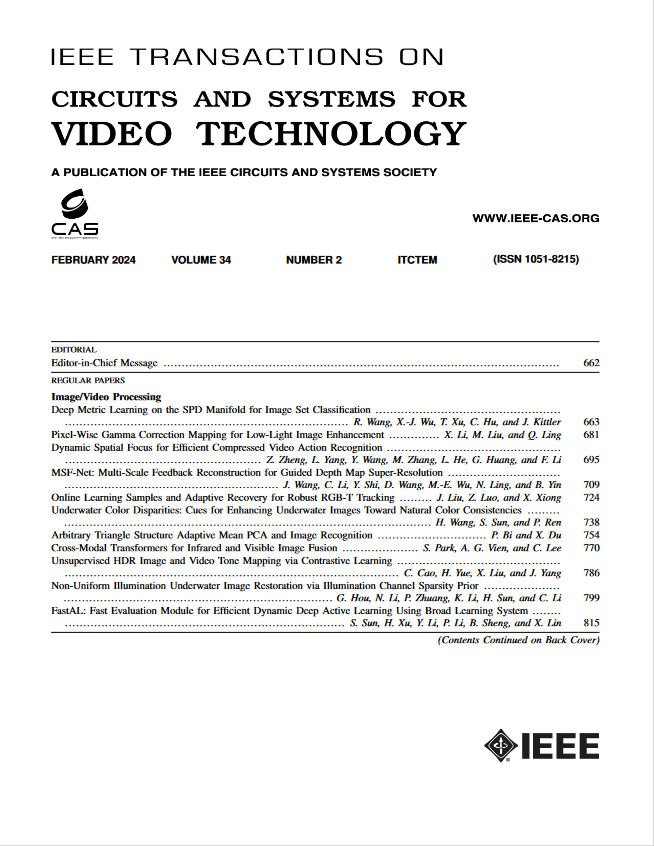Predictive Sample Assignment for Semantically Coherent Out-of-Distribution Detection
IF 8.3
1区 工程技术
Q1 ENGINEERING, ELECTRICAL & ELECTRONIC
IEEE Transactions on Circuits and Systems for Video Technology
Pub Date : 2024-12-09
DOI:10.1109/TCSVT.2024.3514312
引用次数: 0
Abstract
Semantically coherent out-of-distribution detection (SCOOD) is a recently proposed realistic OOD detection setting: given labeled in-distribution (ID) data and mixed in-distribution and out-of-distribution unlabeled data as the training data, SCOOD aims to enable the trained model to accurately identify OOD samples in the testing data. Current SCOOD methods mainly adopt various clustering-based in-distribution sample filtering (IDF) strategies to select clean ID samples from unlabeled data, and take the remaining samples as auxiliary OOD data, which inevitably introduces a large number of noisy samples in training. To address the above issue, we propose a concise SCOOD framework based on predictive sample assignment (PSA). PSA includes a dual-threshold ternary sample assignment strategy based on the predictive energy score that can significantly improve the purity of the selected ID and OOD sample sets by assigning unconfident unlabeled data to an additional discard sample set, and a concept contrastive representation learning loss to further expand the distance between ID and OOD samples in the representation space to assist ID/OOD discrimination. In addition, we also introduce a retraining strategy to help the model fully fit the selected auxiliary ID/OOD samples. Experiments on two standard SCOOD benchmarks demonstrate that our approach outperforms the state-of-the-art methods by a significant margin. The code is available at:语义连贯分布外检测的预测样本分配
语义连贯分布外检测(semantic coherent out- distribution detection, SCOOD)是最近提出的一种现实的OOD检测设置:给定带标签的分布内(in-distribution, ID)数据以及混合分布内和分布外未标记数据作为训练数据,SCOOD旨在使训练模型能够准确识别测试数据中的OOD样本。目前的SCOOD方法主要采用各种基于聚类的分布内样本滤波(IDF)策略,从未标记数据中选择干净的ID样本,并将剩余样本作为辅助OOD数据,这不可避免地在训练中引入了大量带噪声的样本。为了解决上述问题,我们提出了一个基于预测样本分配(PSA)的简明SCOOD框架。PSA包括一个基于预测能量评分的双阈值三元样本分配策略,通过将不自信的未标记数据分配给额外的丢弃样本集,可以显著提高所选ID和OOD样本集的纯度;以及一个概念对比表征学习损失,进一步扩大ID和OOD样本在表征空间中的距离,以帮助ID/OOD区分。此外,我们还引入了一种再训练策略,以帮助模型完全拟合所选的辅助ID/OOD样本。在两个标准SCOOD基准上的实验表明,我们的方法在很大程度上优于最先进的方法。代码可从https://github.com/ZhimaoPeng/PSA获得。
本文章由计算机程序翻译,如有差异,请以英文原文为准。
求助全文
约1分钟内获得全文
求助全文
来源期刊
CiteScore
13.80
自引率
27.40%
发文量
660
审稿时长
5 months
期刊介绍:
The IEEE Transactions on Circuits and Systems for Video Technology (TCSVT) is dedicated to covering all aspects of video technologies from a circuits and systems perspective. We encourage submissions of general, theoretical, and application-oriented papers related to image and video acquisition, representation, presentation, and display. Additionally, we welcome contributions in areas such as processing, filtering, and transforms; analysis and synthesis; learning and understanding; compression, transmission, communication, and networking; as well as storage, retrieval, indexing, and search. Furthermore, papers focusing on hardware and software design and implementation are highly valued. Join us in advancing the field of video technology through innovative research and insights.

 求助内容:
求助内容: 应助结果提醒方式:
应助结果提醒方式:


